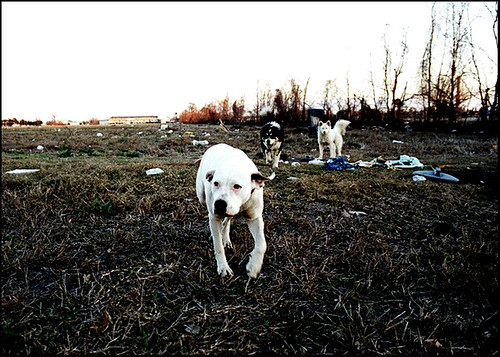
Turn on any TV or radio, and it won’t be long before a pitch for the latest fad diet, exercise gadget, or weight loss book surges through the speakers. But missing from the over-hyped offers is the most critical ingredient for success – the motivation to stick to the plan. Enter our furry canine friends.
America has a love affair with its pets. And canine companions are the “top dog” with 34 percent of American households owning one or more dogs. That’s more than 65 million pooches in the U.S. – and that’s a conservative estimate. While dog lovers nationwide know the strong emotional bond that can develop between humans and dogs, a study at the University of Missouri-Columbia found that this relationship can result in more exercise and more weight loss than most nationally known diet plans. The study showed that participants who walked their dogs daily lost 14 pounds on average in less than a year – far more than the average “fad” dieter. A key reason for the better results: the dog walkers stayed with the program because of the emotional connection between dog and dog owner.
Dogs are pack animals. As such, they relish companionship. While we humans are not described as 'pack' animals, we are also social creatures who need companionship. Therefore, dogs are perfect pets for humans since the relationship is based on the same need for love and interaction. This mutual need was a key driver for the study participants, who reportedly “stuck to the program” because the emotional bond was a motivator.
Despite a solid emotional bond, many dog lovers have difficulty controlling their dogs on leash while walking, which can dramatically reduce the frequency of walks and the enjoyment of them. We’ve all seen the scenario: the hapless human stumbling down the sidewalk, dragged by the dominating dog. It’s a classic suburban image – but it need not be that way. As pack animals, dogs need clear and consistent leadership to feel safe and happy, whether within their packs or their human families. This need is instinctual. If in a dog’s mind a human companion is not up to the task, the dog will constantly challenge for leadership.
Both research and anecdotal evidence show that the key to managing dog behavior is communications and leadership. Dogs have a specific manner of communicating and need leadership to feel secure. Just like humans, dogs need training to set parameters for behavior.
Establishing On-leash LeadershipThe key is focus, focus, focus. Keep your dog focused on you, rather than distractions, such as other dogs, people, kids’ toys, etc. To establish and maintain this focus, anticipate distractions (rather than waiting for a distraction to occur), communicate with your dog in a way he understands. To refocus your dog, voice a low guttural sound (“BAH,” like a growl) and gently flick the leash, just enough to get your dog’s attention. When your dog responds appropriately, give positive praise in a high-toned voice, such as “good dog.” Use this technique to direct your dog to walk at your side. When the dog’s focus strays, repeat the procedure. With practice, dogs will respond to this method because it is similar to their instinctual method of communications.
More Ideas for Walking DogsKeep your dog’s interest by changing pace frequently – intermittently walk fast, slow, stop, etc. Do this regularly and your dog will see this as a game – and find the activity fun and stimulating. Also, dogs can easily differentiate sounds. When you want to stop, shuffle your feet on the ground to indicate you are coming to a stop. Also, change directions frequently. Go left, right, turn in front of the dog, reverse direction, etc. Each time you make a change in direction give a gentle flick of the leash to alert your dog you are about to change direction.
Gaining a better understanding of the dog psyche strengthens the human-canine connection, and learning how to communicate effectively with your dog in a language he understands is a critical step in establishing leadership and control. With some practice, dog owners can establish the leadership required for a satisfying stroll with Fido and reap the benefits of both weight loss and overall fitness. Much more so than the ubiquitous weight-loss infomercials, the emotional bond will be a motivator – and your waistline and your pooch will thank you.

 So you can see I was super-excited when I had found them. I immediately gave it to Tiggles to try.
So you can see I was super-excited when I had found them. I immediately gave it to Tiggles to try.










 Only, I didn't let them :'(
Only, I didn't let them :'(












